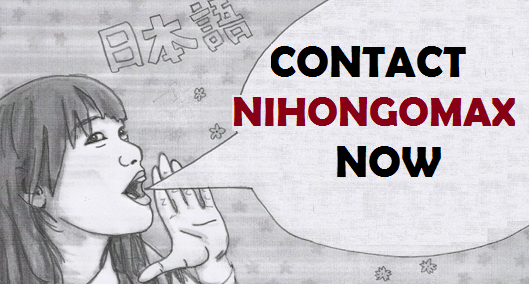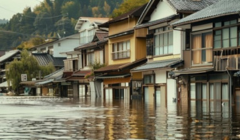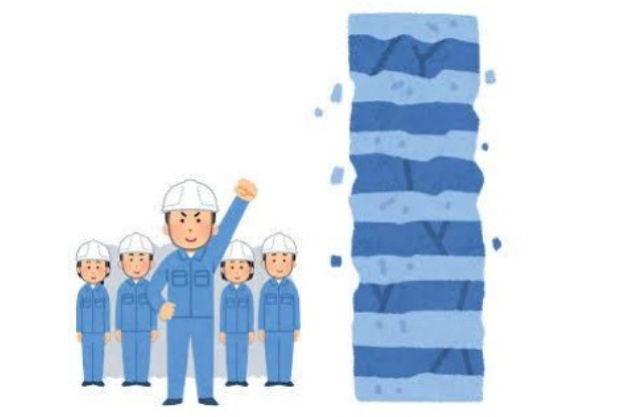


Japan is a country known for its technology, entertainment, food and culture. Along with so many amazing things about Japan, it also known for being prone to natural disasters. Located along the Pacific ring of fire, this island nation is a highly seismically active zone of frequent earthquakes and volcano eruptions. Japan is faced with a lot of earthquake, floods and tsunami warnings each year. But how Japan manages, prepares and recover from this disaster is what will explore in this article.

As unfortunate as it is, a 7.5 magnitude earthquake hit the Japan on the first day of 2024[reference]. Japan has been through many natural disasters in the past and continues to face many disasters till today. This is one of the reasons why Japan as a society shows cultural resilience as the foundation of disaster preparedness. Through rituals and traditions, Japan teaches the importance of resilience, adaptability and mutual support to the successive generations. There is concept in Japan that originates from Buddhism known as “gaman” that translates to perseverance and resilience and is an essential concept in Japanese society. It teaches people to show adaptability and mutual support in times of crisis.

Early Warning Systems are a technology that uses data and research for providing warnings or alerts in sufficient time before a disaster occurs. There are different Early Warning Systems for different types of disasters like earthquakes, tsunamis and volcanic eruptions. For taking necessary precautions for minimizing the damage of an earthquake, an Earthquake Early Warning (EEW) is issued seconds to minutes before the earthquake by the JMA. EEW is issued by detecting initial tremors of an earthquake with advanced technology. Similarly in case of tsunami, JMA uses is Tsunami Warning System that works by using ocean buoys, coastal sensors, and seismic monitoring to forecast tsunami alerts. This gives coastal communities some time to evacuate to higher ground.
These alerts are immediately issued to the people through news channels and on their phones. It has been observed that using these early warning systems minimizes the damage that occurred to a high level.

We saw how early warning systems are a very useful tool while facing a natural disaster. Similarly, the next thing that Japan implements in order to reduce the damage is by building infrastructure that can withstand in extreme conditions. The buildings of Japan are made following the standards set by the government such as walls of the buildings should have a certain thickness. Most buildings are made in a way that can minimize the vibrations coming to the building by various disaster resistant technologies. High rise buildings and towers are also made resilient to withstand earthquakes and high winds such as implanting a central pillar like structure in the buildings.
For tackling tsunami, the extensive network of seawalls, floodgates, and drainage systems are used to reduce the impact of tsunamis, floods and typhoons.
There is a concept in Japan known as “jishuku” which translates to self-help or self descipline in the times of crisis. Local communities organize drills, public awareness and training sessions about disaster prevention, what precautions to take, how to protect oneself in the times of disaster etc. Community-based organizations, known as "jichikai", with the help of governement and volunteers, help support vulnerable population
From an early age, kids are taught about the dangers and precautions of natural disasters. In Japanese schools' mock drills are periodically performed for preparing the students for facing and protecting themselves when a crisis occurs and raising awareness of disaster management in the society. Schools also take students to visit disaster awareness and management centers in Japan, where they can learn better with the help of real-life simulators and documentaries.
Most homes in Japan are equipped with an emergency bag that has most of the essentials like water, medicine, staple food etc.
This way individuals and communities are empowered to support oneself and one another in times of crisis.
Natural disasters not only occur in Japan but are a threat to the whole world. Every country suffers from natural disasters from time to time. Japan actively engages in supporting and sharing knowledge to the vulnerable with its resources and expertise.
Japan showcases its humanitarian nature by sharing its expertise, technology and support to the countries and organizations that are affected by the natural disasters with the initiatives such as the Sendai Framework for Disaster Risk Reduction and the United Nations Office for Disaster Risk Reduction (UNDRR).
Sendai Framework for Disaster Risk Reduction aims to achieve a substantial decrease in the risks of natural disasters by defining and achieving seven targets by 2030.
Earthquake, floods, tsunamis, typhoons and volcanic eruptions are some of the common natural disasters in Japan. It has been essential for Japan to be resilient and smart to prepare for these disasters and reduce their impact greatly. Japan has created a kind of multi-level security system that helps it face disasters. These levels include emergency warning systems that alert people about the coming crisis, through their phones and televisions. This way people can take necessary precautions and protect themselves and their community. Next level is the spreading awareness and training the community about disaster management. This way people are equipped with precious knowledge that significantly helps save lives. The last level can be described as building infrastructure and design of the cities in a way that can greatly minimize the effects of natural disasters.
As Japan has learned to protect its people, it continues to help vulnerable countries as well.
Thank you for reading!
For learn more about Japan and Japanese language, checkout our YouTube channel Nihongomax and our website Nihongomax.